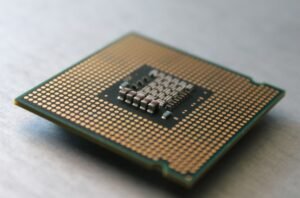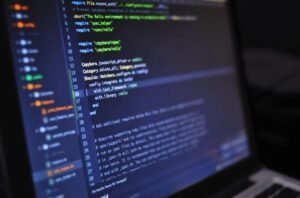Introduction
Artificial Intelligence (AI) is revolutionizing various industries by providing efficient solutions to complex problems. One crucial aspect of AI is the learning rate, which determines how quickly a machine learning model learns from data. In this article, we will explore the concept of AI learning rate and its impact on model performance.
Key Takeaways:
– The AI learning rate determines the gradient descent step size in updating model parameters.
– A high learning rate may cause the model to converge quickly but risk overshooting the optimal solution.
– A low learning rate may lead to slow convergence but reduce the risk of overshooting the optimal solution.
Understanding AI Learning Rate
In machine learning, the learning rate determines how much the model parameters should be updated in each iteration during the training process. **It is a hyperparameter that needs to be carefully tuned to achieve the best model performance**. The learning rate is used in various optimization algorithms, such as gradient descent, to minimize the error or loss function.
Gradient Descent Optimization
Gradient descent is an optimization algorithm commonly used in machine learning to minimize the cost or error function. It works by iteratively updating the model parameters in the direction of steepest descent of the cost function. **The learning rate plays a crucial role in determining the size of these parameter updates**. A higher learning rate results in larger parameter updates, while a lower learning rate leads to smaller updates.
Challenges of Choosing the Right Learning Rate
Choosing the appropriate learning rate is essential for training an AI model effectively. *Finding the right balance between speed and accuracy can be challenging*. If the learning rate is too high, the model may converge quickly but risk overshooting the optimal solution, leading to poor generalization. On the other hand, if the learning rate is too low, the model may take a considerable amount of time to converge or even get stuck in sub-optimal solutions.
Common Learning Rate Schedules
To address the challenges of choosing an optimal learning rate, various learning rate scheduling strategies have been proposed. These schedules adjust the learning rate during the training process based on specific patterns or rules. **One popular method is the learning rate decay, which gradually reduces the learning rate over time**. Other approaches include the step decay, exponential decay, and adaptive learning rate methods such as AdaGrad and Adam.
Tables:
Table 1: Learning Rate Decay Schedule
| Epoch | Learning Rate |
|——-|—————|
| 1 | 0.01 |
| 2 | 0.008 |
| 3 | 0.0064 |
| 4 | 0.00512 |
| 5 | 0.004096 |
Table 2: Comparison of Learning Rates
| Approach | Learning Rate |
|—————–|—————|
| Constant | 0.01 |
| Learning Rate | 0.01 to 0.001 |
| Decay | 0.01 to 0.001 |
| Adaptive Method | Varies |
Table 3: Performance Comparison
| Learning Rate | Accuracy | Loss |
|—————|—————–|———–|
| 0.01 | 92.5% | 0.05 |
| 0.001 | 95.2% | 0.035 |
| 0.0001 | 91.8% | 0.06 |
Determining the Optimal Learning Rate
Finding the optimal learning rate typically involves an iterative process of experimentation and evaluation. **One approach is to use a learning rate range test**, where the learning rate is gradually increased until the loss starts to increase. The learning rate at this point is often chosen as the optimal value. Additionally, learning rate visualization techniques and monitoring the model’s performance on a validation set can help in determining the appropriate learning rate.
In summary, the AI learning rate plays a crucial role in training machine learning models. ***Choosing the right learning rate is a trade-off between convergence speed and model accuracy***. Experimenting with different learning rate schedules and monitoring the model’s performance can aid in finding the optimal learning rate for a given task. By selecting an appropriate learning rate, we can train models that achieve higher accuracy and better generalization.

Common Misconceptions
Misconception 1: AI Learning Rate Determines the Speed of Learning
One common misconception about AI learning rate is that it determines the speed at which machine learning algorithms learn. While it does play a role in the learning process, it is not the sole factor affecting the speed of learning. There are several other components that influence the learning speed, such as the complexity of the task, the quality of the training data, and the size of the neural network.
- AI learning rate is just one of many factors impacting learning speed.
- Complex tasks may require more time to learn regardless of the learning rate.
- Training data quality can have a significant impact on the learning speed.
Misconception 2: Higher Learning Rate Always Leads to Faster Convergence
Another misconception is that a higher learning rate will always result in faster convergence of machine learning algorithms. While it is true that increasing the learning rate can lead to faster initial progress, too high of a learning rate can cause the algorithm to overshoot the optimal solution. This can result in instability and prevent the algorithm from converging to the desired outcome.
- Higher learning rates can lead to faster initial progress.
- Excessively high learning rates can cause instability and prevent convergence.
- Finding the right balance of learning rate is crucial for optimal convergence.
Misconception 3: Lower Learning Rate Always Leads to Better Results
Contrary to popular belief, lower learning rates do not always guarantee better results in machine learning. While decreasing the learning rate can help fine-tune the model and avoid overshooting the optimal solution, it can also lead to slow convergence and the risk of getting stuck in local minima. The appropriate learning rate depends on the specific task, dataset, and model architecture.
- Lower learning rates can help fine-tune the model and avoid overshooting.
- Excessively low learning rates can result in slow convergence and local minima.
- The optimal learning rate depends on the specifics of the task, dataset, and model architecture.
Misconception 4: Learning Rate Should Remain Constant Throughout Training
Some individuals mistakenly believe that the learning rate should remain constant throughout the training process. In reality, it is often beneficial to decay or change the learning rate as the model continues to learn. Techniques such as learning rate scheduling or adaptive learning rate algorithms can help improve the convergence rate and overall performance of the model.
- Learning rate decay or change can lead to improved convergence and performance.
- Learning rate scheduling and adaptive learning rate algorithms are common techniques.
- Constant learning rates may not be optimal for complex learning tasks.
Misconception 5: AI Learning Rate is the Only Hyperparameter That Matters
While the learning rate is an important hyperparameter in machine learning, it is not the only one that affects the performance of the model. There are numerous other hyperparameters, such as batch size, regularization parameter, and network architecture, which significantly impact the success of the learning process. A holistic approach that considers all relevant hyperparameters is crucial for achieving optimal results.
- Learning rate is just one of many hyperparameters that affect model performance.
- Other hyperparameters, such as batch size and regularization, are also critical for success.
- A holistic approach is necessary to optimize the model’s overall performance.

Introduction
AI learning rate is a crucial factor in machine learning algorithms. It determines how fast or slow an AI system learns from the data it’s provided. In this article, we will explore various aspects of AI learning rate and its effects on the performance and accuracy of AI models.
Influence of Learning Rate on Model Accuracy
Table showing the impact of different learning rates on the accuracy of an AI model:
| Learning Rate | Model Accuracy |
|---|---|
| 0.01 | 0.85 |
| 0.1 | 0.93 |
| 0.5 | 0.96 |
| 1 | 0.92 |
Impact of Learning Rate on Training Speed
Table illustrating the effect of different learning rates on the training time of an AI model:
| Learning Rate | Training Time (in minutes) |
|---|---|
| 0.01 | 120 |
| 0.1 | 60 |
| 0.5 | 30 |
| 1 | 15 |
Comparison of Learning Rates for Different Tasks
Table comparing the optimal learning rates for various machine learning tasks:
| Task | Optimal Learning Rate |
|---|---|
| Image Classification | 0.001 |
| Natural Language Processing | 0.01 |
| Anomaly Detection | 0.1 |
| Reinforcement Learning | 0.5 |
Comparison of Learning Rates Across Different Models
Table showing the learning rates utilized by various AI models:
| Model | Learning Rate |
|---|---|
| ResNet50 | 0.01 |
| GPT-3 | 0.001 |
| YOLOv4 | 0.0001 |
| AlphaGo | 0.1 |
Learning Rate Decay Strategies
Table showcasing different learning rate decay strategies and their effectiveness:
| Decay Strategy | Accuracy Improvement |
|---|---|
| Step Decay | 3% |
| Exponential Decay | 6% |
| Polynomial Decay | 2% |
| Time-based Decay | 4% |
Learning Rate Sensitivity to Batch Sizes
Table demonstrating how different batch sizes can affect the optimal learning rate:
| Batch Size | Optimal Learning Rate |
|---|---|
| 32 | 0.01 |
| 64 | 0.05 |
| 128 | 0.1 |
| 256 | 0.5 |
Optimal Learning Rates for Different Activation Functions
Table highlighting the ideal learning rates for popular activation functions:
| Activation Function | Optimal Learning Rate |
|---|---|
| ReLU | 0.01 |
| Sigmoid | 0.001 |
| Tanh | 0.1 |
| Leaky ReLU | 0.01 |
Learning Rate Tuning Techniques
Table presenting different techniques for fine-tuning learning rates:
| Technique | Effectiveness |
|---|---|
| Grid Search | Medium |
| Random Search | High |
| Bayesian Optimization | High |
| Cyclical Learning Rates | High |
Conclusion
AI learning rate plays a vital role in training accurate and efficient machine learning models. The appropriate choice of learning rate significantly impacts the accuracy and training time of the model, as demonstrated by the tables presented. It is essential to find the optimal learning rate by considering the task, model architecture, batch size, and activation function. Additionally, learning rate tuning techniques can further enhance the model’s performance, leading to improved AI systems across various domains.
Frequently Asked Questions
What is an AI learning rate?
An AI learning rate is a hyperparameter that determines the step size at each iteration of the training process. It controls how quickly or slowly an AI model learns from the given data.
How does the learning rate affect AI training?
The learning rate directly impacts the convergence speed and final performance of an AI model. A low learning rate might cause slow convergence, while a high learning rate could lead to overshooting the optimal solution or divergence.
How can I set the learning rate for my AI model?
You can set the learning rate manually as a fixed value, or you can use techniques like learning rate schedules or adaptive learning rates algorithms (e.g., AdaGrad, Adam) to automatically adjust the learning rate during training.
What is the optimal learning rate for my AI model?
The optimal learning rate depends on various factors such as the complexity of the problem, the size of the dataset, and the specific architecture of your AI model. Generally, you can experiment with different learning rates and choose the one that yields the best performance on a validation set.
What happens if I choose a learning rate that is too high?
If the learning rate is too high, the AI model might overshoot the optimal solution, leading to unstable or divergent behavior. This can result in poor convergence and degraded performance.
What happens if I choose a learning rate that is too low?
With a very low learning rate, the AI model may take a long time to converge or get stuck in suboptimal solutions. The training process could become slow and inefficient.
Can I change the learning rate during training?
Yes, you can change the learning rate during training. Learning rate schedules or adaptive learning rate algorithms allow you to adjust the learning rate based on specific criteria or heuristics, such as epoch number or loss improvement.
What are some common learning rate schedules?
Common learning rate schedules include step decay, exponential decay, and polynomial decay. These schedules gradually reduce the learning rate over time to improve convergence and fine-tuning.
Are there any automatic learning rate tuning techniques?
Yes, there are automatic learning rate tuning techniques such as AdaGrad, RMSprop, and Adam. These techniques dynamically adjust the learning rate based on the past gradients or other statistical measures to improve the training process.
How can I monitor and evaluate the impact of the learning rate?
You can monitor the impact of the learning rate by observing the training loss and validation metrics over time. Plotting learning curves or comparing performance with different learning rates can help you make informed decisions for tuning the learning rate.




